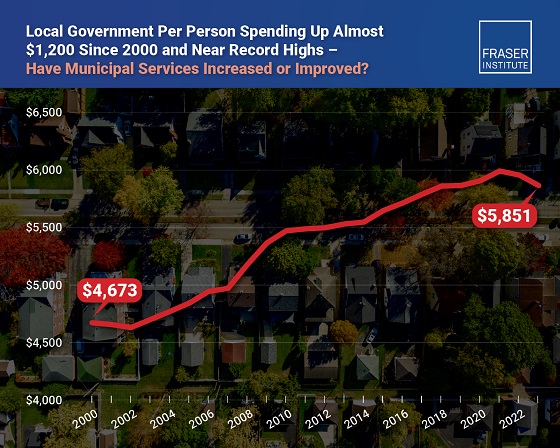Alberta
New surveillance teams led by the Alberta Sheriffs working with local police in rural communities

More boots on the ground to fight rural crime
Rural crime continues to be a top concern among residents and businesses in rural Alberta, which is why Alberta’s government remains committed to addressing it through enhanced surveillance and other crime reduction initiatives. Alberta’s government invested $4.3 million for the Alberta Sheriffs to put more boots on the ground. This investment supported the establishment of two plainclothes teams – one in northern Alberta and one in southern Alberta – to support police in carrying out surveillance on criminal targets in rural areas.
Both teams are now fully staffed and operational, ready to fight crime in rural areas across Alberta. These rural surveillance teams will work to prevent crime, monitor agricultural theft and work in collaboration with local law enforcement to share intelligence and resources to keep Albertans and their property safe and secure.
“Criminals and organized crime are not welcome in Alberta. Full stop. The addition of two new surveillance teams will further support our law enforcement partners in stamping out criminal activity in Alberta’s rural areas. This is about supporting local investigations to address local crime in our smaller communities. Together, both teams will form another key component of Alberta’s efforts to combat crime and ensure Albertans feel safe at home and in their communities, regardless of where they live.”
The Alberta Sheriffs have an existing surveillance unit that is part of the Alberta Law Enforcement Response Teams (ALERT) and focused mainly on serious and organized crime investigations. The new surveillance teams will fill a gap by helping rural RCMP detachments with local investigations.
“Through their specialized knowledge, training and experience, Alberta’s new surveillance teams are providing another important mechanism in the fight against crime in Alberta’s rural communities. Working in close collaboration with the RCMP and other policing agencies, their efforts will play a key role in gathering evidence and information that will help disrupt crime throughout the province.”
“This announcement by the Alberta government and Minister Ellis is a positive step forward for the residents of Alberta, especially in rural areas. Targeting known criminals is a very effective way to reduce the level of crime taking place and will greatly assist the RCMP who have a vast area to police.”
“We are happy to hear about increased resources being allocated to assist our communities. Addressing rural crime is one of the top priorities of the Alberta RCMP, and our partners at the Alberta Sheriffs already play a vital role in keeping Albertans safe. The creation of these new surveillance teams will help augment our ongoing crime reduction strategies in Alberta communities, and we look forward to working with them going forward.”
The new surveillance teams are part of a suite of measures to expand the role of the Alberta Sheriffs and make Alberta communities safer. Other actions include the expansion of the Safer Communities and Neighbourhoods (SCAN) unit – which uses legal sanctions and court orders to target problem properties where illegal activities are taking place – and the expansion of the RAPID Response initiative with funding for the Sheriff Highway Patrol to train and equip members to assist the RCMP with emergencies and high-priority calls.
Related news
- Fighting rural crime (March 24, 2023)
Multimedia
Alberta
Alberta Provincial Police – New chief of Independent Agency Police Service

Sat Parhar has been appointed as the first chief of the Independent Agency Police Service, marking the next step toward a new municipal policing option.
The appointment of a new chief for the Independent Agency Police Service (IAPS) marks the next step in giving municipalities a new option for local policing and builds on the work already underway for the agency to assume the police-like duties currently carried out by the Alberta Sheriffs. The IAPS will empower municipalities to adopt strategies that effectively respond to their specific safety concerns, enhancing public safety across the province.
Chief Parhar brings more than 25 years of policing experience, including senior roles with the Calgary Police Service, most recently as deputy chief. His frontline policing experience and deep understanding of Alberta’s complex and diverse public safety landscape positions him to lead the agency as it takes shape and begins its work as a new municipal policing option, keeping communities safe.
Once operational, the agency will strengthen Alberta’s existing policing model and complement the province’s current police services, which includes the RCMP, Indigenous policing services and municipal police. It will help fill gaps and ensure law enforcement resources are deployed efficiently to meet Alberta’s evolving public safety needs and improve law enforcement response times, particularly in rural communities.
“Appointing Chief Sat Parhar is a key milestone in Alberta’s plan to give municipalities a real choice in how their communities are kept safe. This is about building a modern police service that reflects the priorities of Albertans, strengthens local decision-making, and ensures every corner of our province, especially rural areas, can count on responsive, effective law enforcement. With his decades of experience and deep understanding of Alberta’s policing landscape, he is the right leader to bring this vision to life.”
“This appointment signifies a significant step forward in our efforts to establish a more robust, community-focused policing model that is better equipped to meet the unique needs of our local residents. Under Chief Parhar’s visionary leadership, we are confident that we will develop a modern, efficient police service that not only enhances public safety but also aligns closely with the priorities and values of Albertans. His experience and commitment are vital in shaping an IAPS that is responsive, transparent, and dedicated to fostering trust and collaboration within the community, ultimately ensuring a safer and more connected society for all.”
Chief Parhar’s immediate priorities will be to hire an executive team and commence organizational planning such as developing key recruitment, training and other operational policies. Chief Parhar’s appointment is the first step of many to establishing the IAPS.
“It’s an honour to take on this role and help shape a modern police service built for Alberta. My focus from day one will be on setting high standards for professionalism, building strong relationships with our partners and ensuring this service reflects the needs and priorities of the communities we serve.”
The Independent Agency Police Service was formally created through regulation following the passing of Public Safety Statutes Amendment Act, 2024. The agency will operate as an independent Crown corporation, and will be renamed the Alberta Sheriffs Police Service, with its head office located in Calgary. The IAPS will be operationally independent from the provincial government with civilian oversight, consistent with all police services in Alberta.
“When it comes to policing, municipalities like ours deserve a choice – especially when the current system leaves us disadvantaged simply because of our size. We look forward to learning more about what that alternative will look like once an Alberta police agency is fully established and the options are clear. For us, this is about fairness, sustainability, and ensuring municipalities have access to policing solutions that reflect both their needs and their realities.”
Quick facts
- The regulation establishes the IAPS Provincial Corporation and its governance structure including board of directors, board of director powers, financial responsibilities and accountabilities.
Related news
- Expanding municipal police service options (April 7, 2024)
Alberta
Pierre Poilievre – Per Capita, Hardisty, Alberta Is the Most Important Little Town In Canada

From Pierre Poilievre
-

 Business1 day ago
Business1 day agoOttawa Funded the China Ferry Deal—Then Pretended to Oppose It
-

 COVID-192 days ago
COVID-192 days agoNew Peer-Reviewed Study Affirms COVID Vaccines Reduce Fertility
-

 MAiD2 days ago
MAiD2 days agoCanada’s euthanasia regime is not health care, but a death machine for the unwanted
-

 Alberta2 days ago
Alberta2 days agoThe permanent CO2 storage site at the end of the Alberta Carbon Trunk Line is just getting started
-

 Business1 day ago
Business1 day agoWorld Economic Forum Aims to Repair Relations with Schwab
-

 Business1 day ago
Business1 day agoMunicipal government per-person spending in Canada hit near record levels
-

 Alberta1 day ago
Alberta1 day agoAlberta’s government is investing $5 million to help launch the world’s first direct air capture centre at Innisfail
-

 Business1 day ago
Business1 day agoA new federal bureaucracy will not deliver the affordable housing Canadians need






